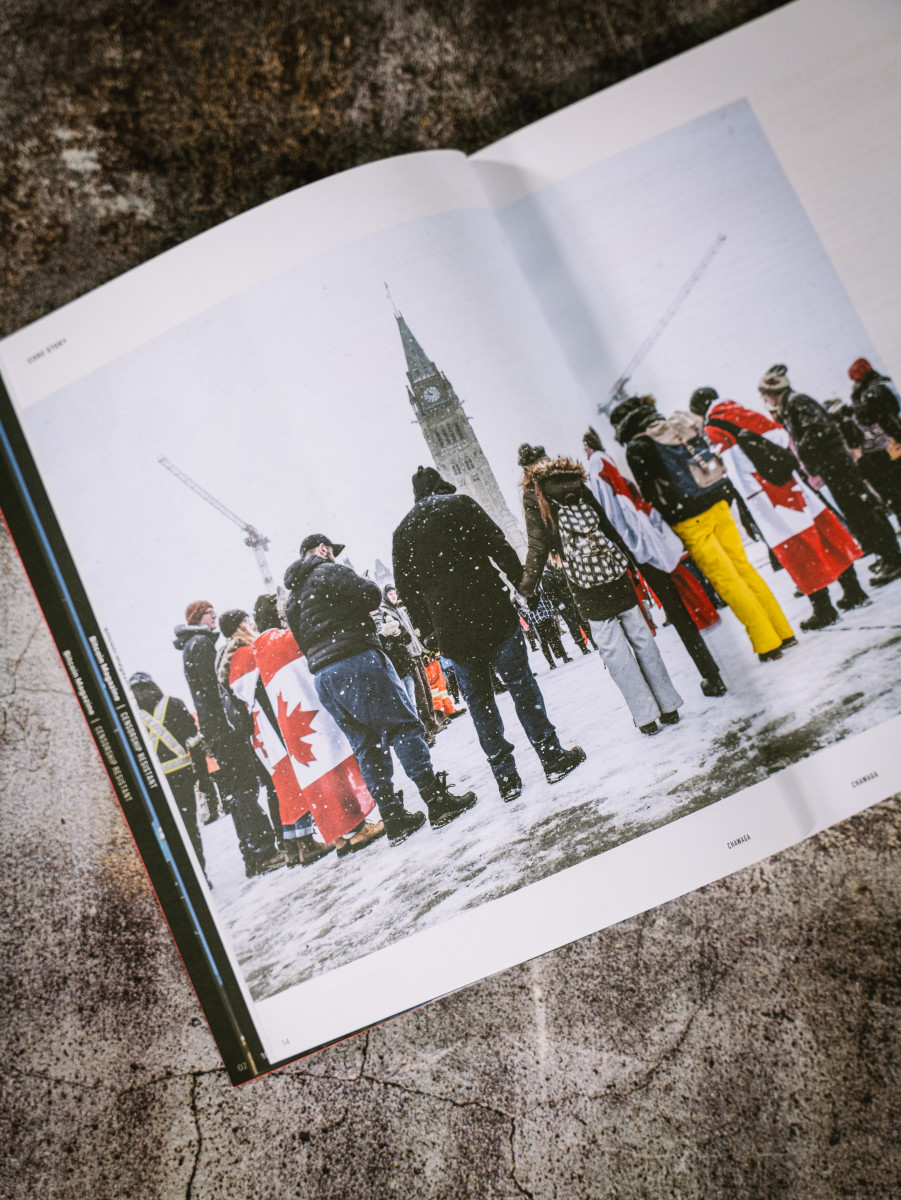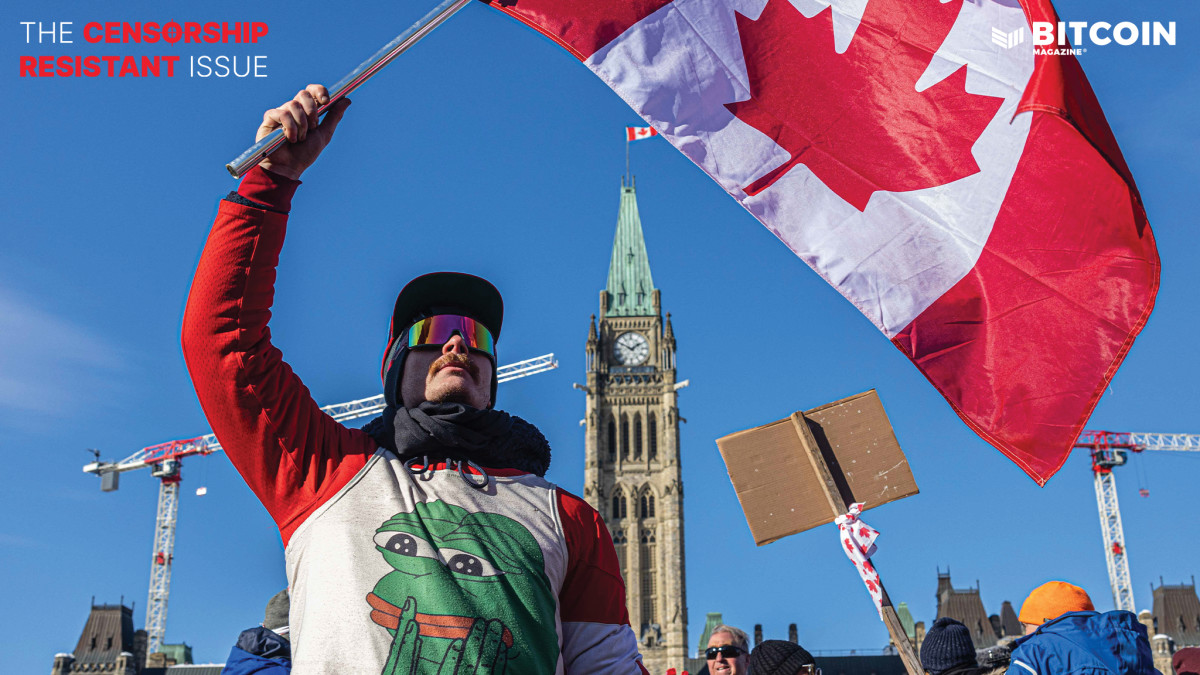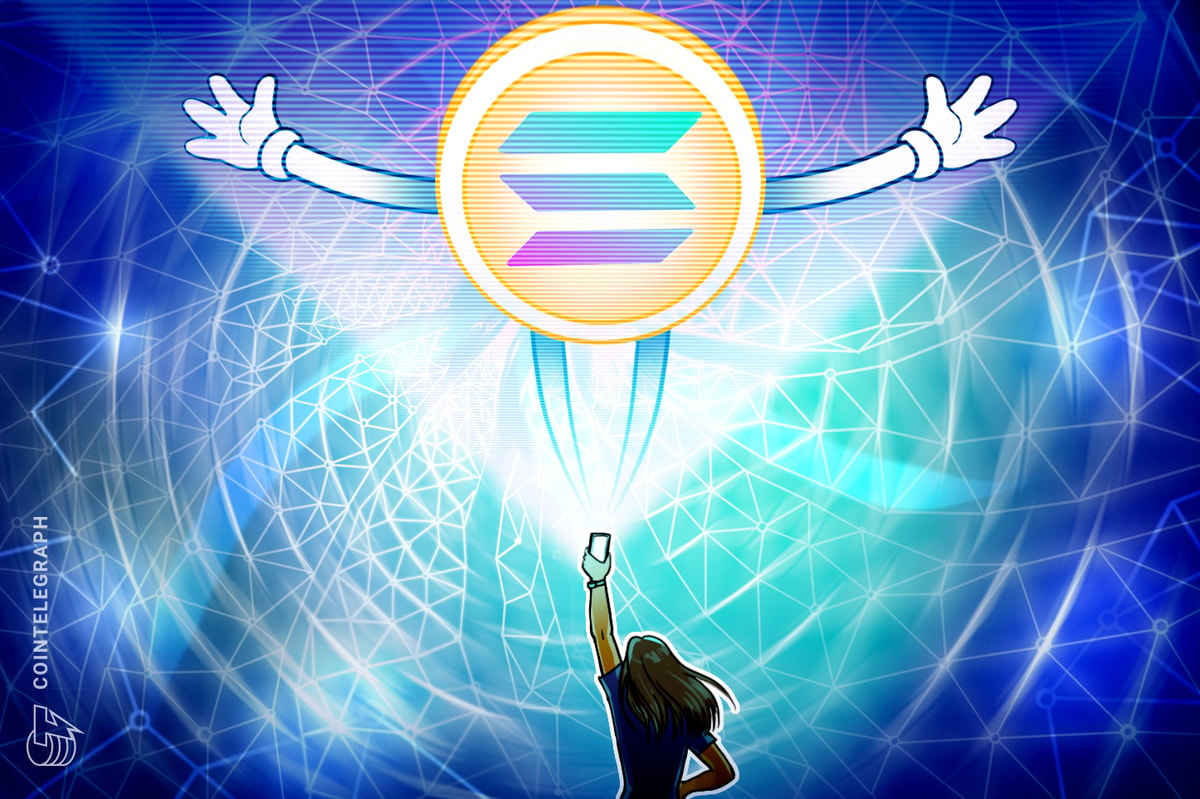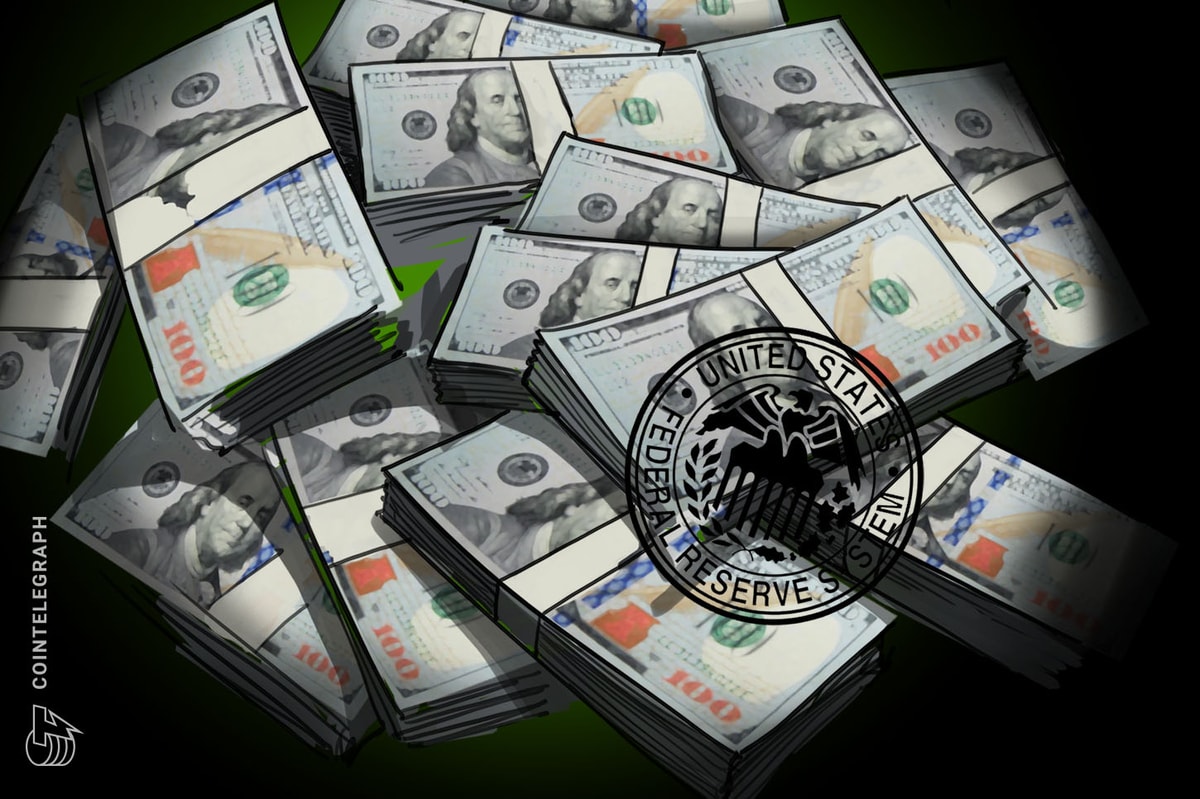This article originally appeared in Bitcoin Magazine's "Censorship Resistant Issue." To get a copy, visit our store.
The Freedom Convoy, a sweeping protest prompted by COVID-19 vaccine mandates for Canadian truckers, saw authorities work outside of established laws to quell demonstrations and block financial support. Among the chaos, Bitcoin proved itself to be a sovereign financial rail as hundreds of thousands of dollars in BTC reached protestors in spite of government efforts to block donations.
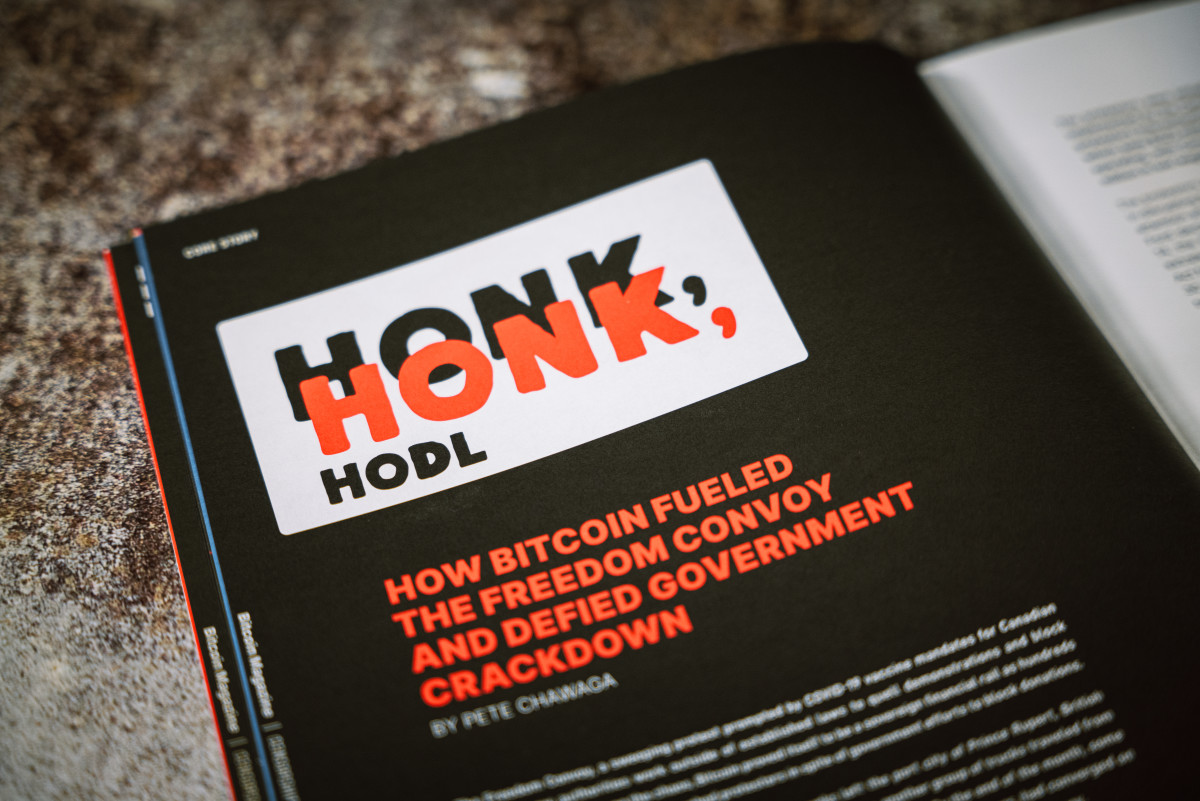
On January 22, a convoy of Canadian long-haul trucks left the port city of Prince Rupert, British Columbia, and arrived in nearby Prince George. The next day, another group of trucks traveled from Delta, British Columbia, to a section of the Trans-Canada Highway. By the end of the month, some 3,000 trucks and other vehicles, accompanied by more than 15,000 protesters, had converged on the country’s capital of Ottawa, blocking its streets and calling itself the Freedom Convoy.
The city’s police promptly launched a criminal investigation into their assembly.
The protestors were initially motivated by COVID-19 vaccine mandates for cross-border truck drivers implemented by the Canadian government on January 15. On February 7 and for several days afterward, protestors intermittently blocked Ambassador Bridge, the busiest international crossing in North America, which sees $323 million worth of goods cross daily. Ottawa businesses were damaged and blocked from operating, with Canadian economist Armine Yalnizyan later estimating that local workers’ suffered $208 million in lost wages.
The protestors were almost immediately successful in disrupting business as usual and attracting media attention and on February 11, Ontario Premier Doug Ford declared a state of emergency. On February 14, the Canadian government took unprecedented extralegal measures by invoking the Emergencies Act for the first time since it was enacted more than 30 years ago, giving authorities the temporary power to reach beyond the scope of existing law to quell the protest. Later that month, similar protests were organized in more than 30 other countries, including the U.S., Argentina and New Zealand.
And through it all, the Freedom Convoy quickly became one of the most high-profile test cases for the use of Bitcoin as a permissionless and censorship-resistant way of transacting value to whomever, wherever, whenever.
“This will be a historical moment for Bitcoin,” explained B.J. Dichter, a Toronto resident born and raised in Canada, who was a long-haul trucker himself before becoming a spokesperson for the Freedom Convoy. “Because we always talked about this hypothetical, the government tyranny of blocking your bank accounts, stealing your money and whatever… Well, now they just did. So, it proved everything. Everything that people said about Bitcoin like, ‘Oh, that’s hyperbolic. That’s never gonna happen.’ Well, guess what? Yesterday’s conspiracy is today’s reality. And I think in the future, people are going to see, that was the moment that regular people and everybody understood that the government can’t track it, can’t block it, and shouldn’t be able to.”
Pushed To Protest
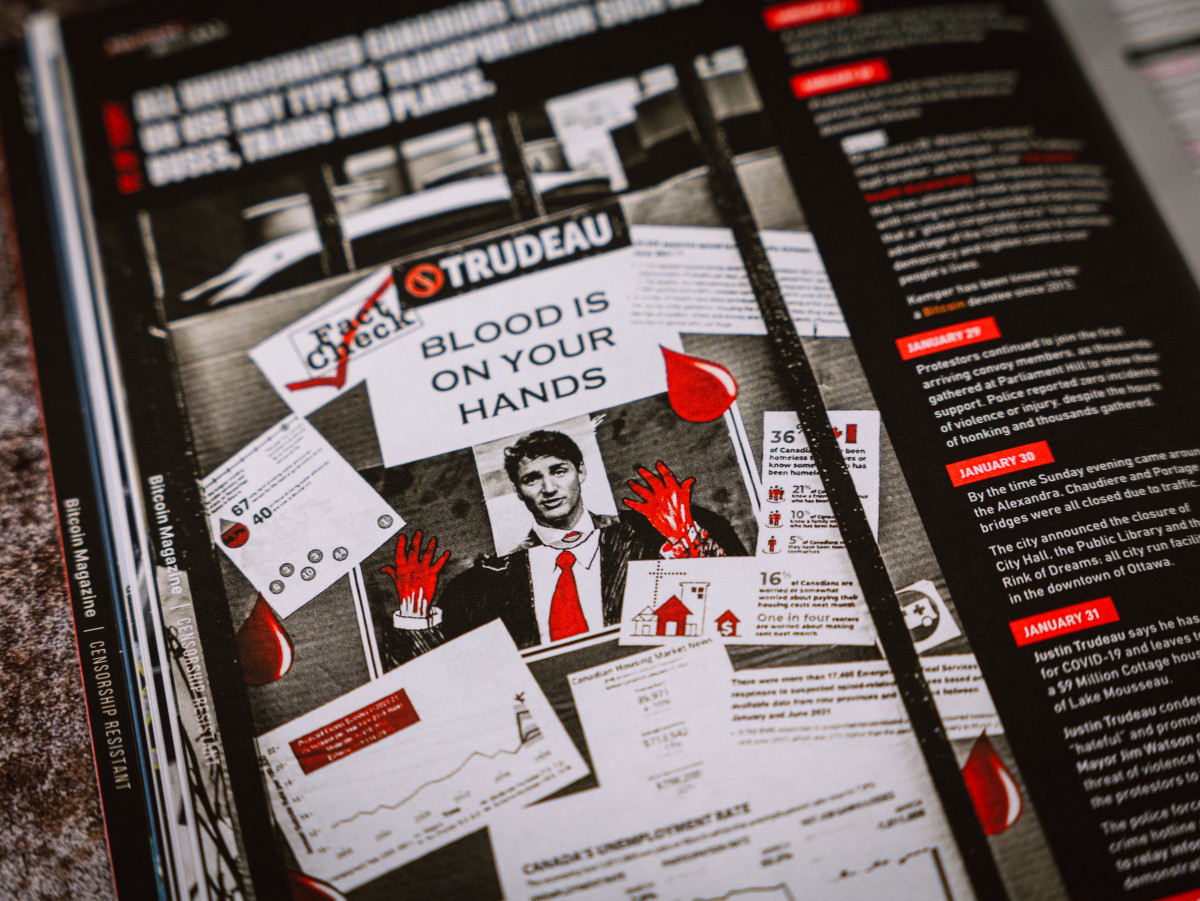
In 2018, Canada’s trucking industry pulled in about $31.5 billion, moving more than 63 million shipments, according to Statista. From 2009 to 2018, it generated $277.1 billion in all. For many Canadians over the last few years, working as a long-haul trucker was seen as an opportunity to earn a flexible and dependable income.
“I got my license before the regulations changed in Canada that made it very restrictive to get a trucking license,” Dichter explained. “My brother thought it would be good when he retires that maybe we’ll start doing a business together and he wanted to go into trucking… So, I got my license and was getting a little bit of experience, part time when I had days off… Trucking became a side hustle.”
Dichter recalled his role in the Freedom Convoy while sitting in the halls of the Miami Beach Convention Center during the Bitcoin 2022 conference in April, where he had been invited to speak about the role that Bitcoin played in sustaining the protest. He described himself as a “serial entrepreneur,” who has worked as a geologist and diamond grader, in the motorcycle industry, as a podcast producer and more. His own interest in Bitcoin was piqued in 2015 and he first invested in bitcoin the year after.
He said that stringent regulations imposed on Canadian truck drivers had been a longstanding point of contention between drivers and regulators since well before the Freedom Convoy was organized. In 2019, for instance, 150 truckers from Alberta took a four-day convoy drive to Parliament Hill in Ottawa, calling themselves the United We Roll convoy. According to local news coverage at the time, the truckers were protesting a slew of government impositions, including oil and gas taxes.
Dichter called this year’s vaccine mandates the “straw that broke the camel’s back” for Canadian truckers.
“Most of us are vaccinated,” he explained. “It was the mandates, the lack of choice. That was the problem.”
Dichter described a personal experience that took place just days before the convoy occupation of Ottawa; border agents had tracked his vaccine status by surveilling his phone within a certain vicinity of the U.S. border as he drove back home. To him and many other Canadians, this level of government monitoring was indicative of a growing willingness by government officials to track personal details about their citizens without permission.
“If that’s the case, then we have a completely tracked and surveilled society, like this is crazy where we’re going, we’ve got to stop this now, and all of us saw it,” he said. “It was these final restrictions of ‘Papers please,’ to cross the border into your own country that was just enough.”
About a week before protestors left for Ottawa, Dichter was contacted by Freedom Convoy organizer Tamara Lich, a longtime friend who has organized numerous protest movements in her native Canada. She was arrested on February 17 for her role in the Freedom Convoy and, as of this writing, is legally barred from returning to Ontario except for court-related reasons. Lich asked Dichter for help with media relations.
“I love these truckers, I’m friends with them, but none of them have any media experience or any media training whatsoever,” Lich told Ditcher, as he recalled. “Can you be the spokesperson, help with the press releases, all that sort of stuff?”
Freedom Convoy organizers launched a fundraiser on centralized donations processor GoFundMe in January 2022, hoping to raise about $20,000 for fuel and other basic supplies needed to sustain their protest. To their surprise, by the end of January they had raised about $4 million from more than 100,000 donors and GoFundMe had distributed about $800,000 to the organizers.
But in early February, GoFundMe paused the distributions over concerns that the fundraiser was not in compliance with its terms of service, which include prohibitions on “user content that reflects or promotes behavior in support of violence.”
“Recent events in Ottawa, Canada, have generated widespread discussion about the Freedom Convoy 2022 fundraiser on GoFundMe,” according to a company statement from February 2. “As part of our information gathering process, we also requested more information from the organizer regarding the use of funds to ensure the fundraiser is still compliant with our Terms of Service. When we do not receive required information, we may put a pause on donations as we did in this case.”
That’s when the Canadian government started getting directly involved in the transmission of funds from donors to protestors.
On February 3, a committee from the Canadian House of Commons asked GoFundMe officials to testify over security concerns about where the donated funds were coming from and where they might be going. Members of Parliament also asked the Financial Transactions and Reports Analysis Centre of Canada (FINTRAC) to testify. The next day, GoFundMe removed the campaign.
Several other centralized fundraising platforms started collecting funds for the Freedom Convoy, but it was clear that the Canadian government had drawn a line in the sand. Fundraisers on Christian-focused donations platform GiveSendGo had collected more than $8.5 million for the protestors, but the Ontario Superior Court of Justice granted a court order to freeze the funds. By late February, Canada had invoked the Emergencies Act and had frozen more than 75 bank accounts linked to the protests.
“Three years ago, if you had asked me what’s the chance that Canada would freeze individuals’ bank accounts… I’d find it really hard to believe it was 20%,” said Greg Foss, an outspoken Bitcoin advocate and fifth-generation Canadian. “And three years later, it’s 100%... It was not a good thing for freedom.”

A Permissionless Avenue
As Dichter and others organizing the Freedom Convoy wrestled with centralized fundraisers, Bitcoiners who had been supporting the movement throughout took it upon themselves to raise BTC donations through Tallycoin, a bitcoin-based fundraising platform.
“The Bitcoin community was awesome,” said Dichter. “Of all the things I had to deal with — these little groups infighting and people, you know, trying to do their own press conferences — the one community that I could depend on was the Bitcoin community, because they had all their ducks lined up. They were great, they just kind of kept me up to date.”
Tallycoin enables donations directly to a fundraiser’s Bitcoin wallet and offers the option to list an extended public key so that each individual Bitcoin payment generates a unique address. This is a critical privacy best practice that makes it more difficult for observers to associate these payments together. The platform also offers Lightning Network donations for fundraisers that use Bitcoin payment processors or by directly connecting their own Lightning nodes.
Using Tallycoin, a Bitcoiner named Nicholas St. Louis, who used the pseudonym NobodyCaribou, spun up a fundraising campaign called “HonkHonk Hodl,” receiving its first donation on February 1. As the Freedom Convoy’s fiat fundraisers were shut down and frozen, this Bitcoin-based campaign announced that it had surpassed its 5 BTC goal, worth about $213,000 at the time, on the same day that the Canadian government invoked the Emergencies Act.
But getting the bitcoin from HonkHonk Hodl’s Tallycoin addresses into the hands of protesting truckers, many of whom knew very little about the technology, would be a challenge. St. Louis teamed with J.W. Weatherman, a Bitcoin developer and donor, to establish a plan and they published a lengthy, public Google Doc called “Step-By-Step Guide For Distributing Bitcoin.”
The guide described a process of creating envelope packages to be handed out to protesting truckers directly via a “phone wallet that is properly backed up on paper.” At the time of this writing, the Google Doc appears to have been abandoned, with several items left unfinalized, but it outlined a process in which organizers utilized the security-focused Tails operating system, then the Electrum Bitcoin wallet to generate private keys, which would be handwritten in pen on two separate pieces of paper. These papers would then be sealed in an envelope, labeled as “trucker 1 — seed 1,” for instance, then sealed inside another envelope, alongside written directions for how to import the seed into a secure phone wallet and, ultimately, spend the donated bitcoin.
On February 15 via Twitter, St. Louis informed donors that he planned to distribute the bitcoin to 200 protesting truckers in a “verifiable way” by handing out paper bitcoin wallets containing seed words pre-loaded with 10,000,021 satoshis, along with instructions for how they could secure and utilize the funds.
On February 17, St. Louis tweeted an update that he and a partner had distributed 14.6 BTC to about 90 truckers in a 24-hour span, walking cab to cab and personally handing them out.
“There’s eight grand in bitcoin in there,” St. Louis tells a trucker in one video posted to Twitter on February 18, as he hands the trucker an envelope covered in sparkly stickers. “Basically, open it up, there’s instructions. All you do is a recovery code, it’s going to tell you to download BlueWallet, which is what the recovery code is for… Boot it up, it’s yours, thanks for your service.”
The video then shows the driver and St. Louis shake hands through the truck’s cab window before St. Louis walks on.
“I just met that guy a couple, I don’t know, a week ago, and he had a Bitcoin toque on,” the driver explained after turning back to the camera. “I said, ‘What’s up with that?’ He said, ‘Actually, if you don’t mind…’ So I let him sit in the truck or whatever, and we downloaded his wallet or whatever and he said there’s some massive, freedom loving people who love Bitcoin and stuff like that, so he said we’re probably going to get some big donors in the future, so whatever. And apparently there’s eight grand of bitcoin in here… I guarantee it’s legit… That’s definitely one of the craziest things that’s happened in the last two weeks.”
A brief documentary released by Reason’s Zach Weissmueller indicated that the HonkHonk Hodl fundraiser raised more than $1 million worth of bitcoin before it was shut down by St. Louis, and that it delivered more than $600,000 into the hands of protestors.
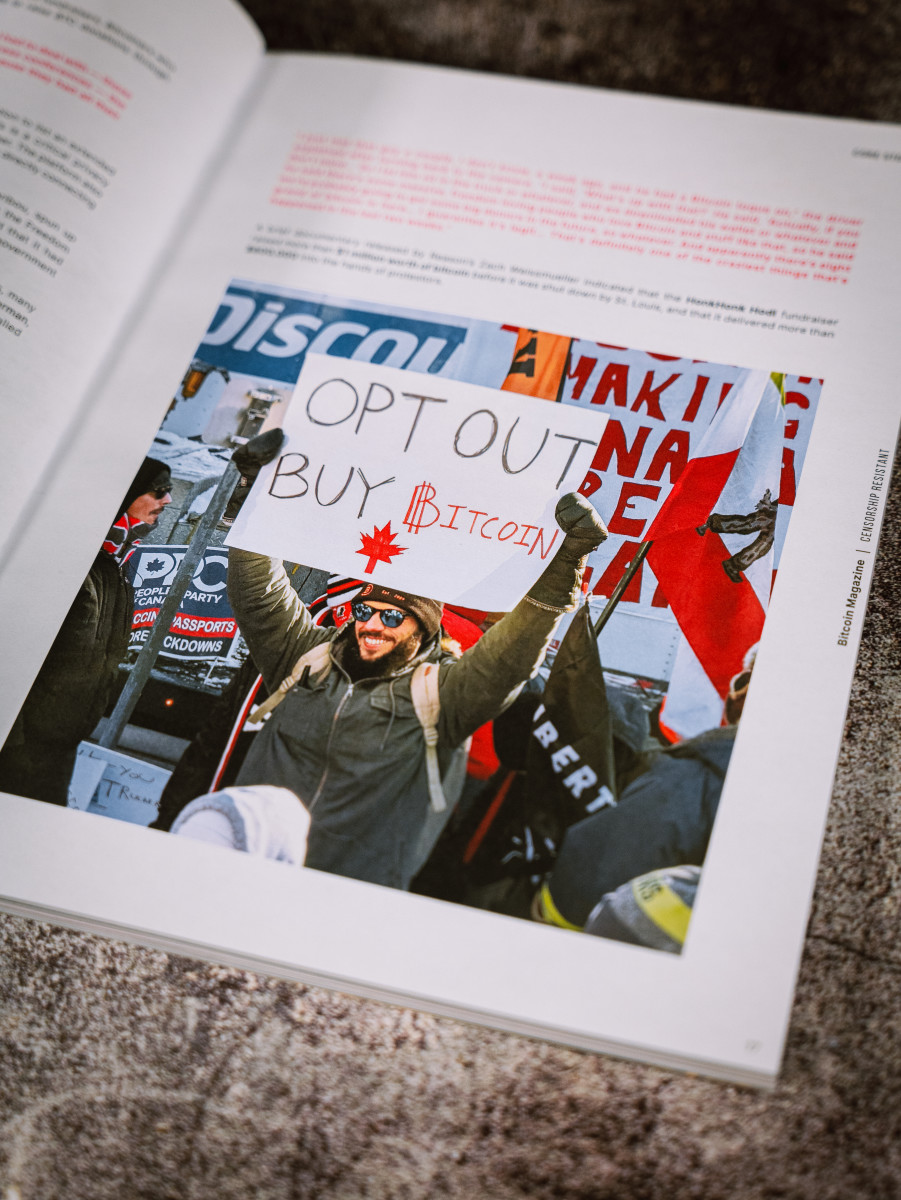
A Central Point Of Failure
On February 16, the Royal Canadian Mounted Police (RCMP) issued an order to all FINTRAC-regulated entities, demanding that they cease transacting with a list of 29 bitcoin addresses that it had associated with the protest.
On February 17, the same day that St. Louis announced that he and a partner had personally distributed more than 14 BTC to protesting truckers, a private class action lawsuit targeting Freedom Convoy participants received a judicial order, known as a “Mareva injunction.” It granted a freeze on the cryptocurrency affiliated with a group of listed defendants and restricted them from moving that cryptocurrency into bank accounts and wallet addresses named in the suit.
Defendants in the lawsuit included Lich, Dichter and St. Louis. It ordered TallyCoin and other digital asset platforms to freeze any transactions related to the identified wallets. The suit was initiated by a group of Ottawa residents who claimed that they were forced to close their businesses or lost work as a result of the protest. This was the first time in Canada’s history that such an injunction was used to freeze cryptocurrency and the lawyer representing the plaintiffs reportedly hired a private investigator to track down the Freedom Convoy organizers.
“The velocity with which the Canadian government was able to target and freeze the flow of money speaks volumes about how much power lies in the freedom of transacting,” said Econoalchemist, a pseudonymous Bitcoin privacy expert who publishes guides online focused on how to accumulate and protect BTC while obscuring your real-world identity. “This is where Bitcoin shines, a decentralized, peer-to-peer electronic cash system. With no central authority to deny transactions based on some floating moral standard, peers within the Bitcoin network can transact free from anyone’s permission. No government blacklist or class action lawsuit can stop a Bitcoin transaction from going through.”
As evidence of Bitcoin’s ability to enable transactions despite government regulations, HonkHonkWallets.GitHub.io, a website run by convoy fundraisers to automatically scan the Bitcoin blockchain, indicates that 59 of 100 wallets distributed to truckers had been claimed and that 29 of those had seen at least one additional transaction, as of block 732,726. Much of this activity occurred well after the Mareva injunction was granted.
But Bitcoin is pseudonymous, rather than anonymous, and all transactions are recorded on Bitcoin’s public and immutable ledger, meaning that every transaction is subject to scrutiny in perpetuity. Bitcoin may have proven to be a powerful method for circumventing centralized fundraisers for the Freedom Convoy, but it demonstrated its current limitations as well.
“The limitations of transacting with Bitcoin are mostly from connecting external information to on-chain activity,” Econoalchemist explained. “For example, using on/off ramps that require KYC information. This is where permission and censorship creep into the Bitcoin ecosystem.”
By March 18, Canadian police had managed to freeze nearly 6 BTC raised for protesting truckers.
“Though the RCMP won’t comment on the case, it issued a statement to CBC News saying it has the capability to seize and recover digital currency assets, pointing to past cases where the Crown successfully prosecuted crypto criminals,” according to a March 21 CBC News report.
Perhaps led there by on-chain surveillance methods, police raided St. Louis’ home in late February and, according to him, seized 0.28 bitcoin stored in a wallet that he controlled along with Lich and Freedom Convoy organizer Chris Barber.
“Officers forcibly removed me from my apartment and took me to an unmarked police vehicle,” St. Louis told the Financial Post, per an article published in March. “Police wanted the seed phrases for my crypto wallets. Under police compulsion, I provided my seed phrases.”
When Bitcoin Magazine reached St. Louis in mid-April, he declined to comment for this article, explaining that he was still subject to the Mareva injunction and was concerned that further legal troubles could put an additional 7.5 in donated BTC at risk of government seizure.
“I would have used a Bitcoin donation tool that generates a new address for every donor,” Econoalchemist said about how he might have operated the Freedom Convoy fundraiser differently in hindsight, while acknowledging that these privacy measures would disrupt transparency about how the donations were distributed. “I would have been sending all donations to [bitcoin mixing service] Whirlpool at periodic intervals during the fundraising campaign… I would have asked the truckers for their deposit address instead of creating the wallets on their behalf… Then I would have sent them their bitcoin from the Whirlpool post-mix balance.”
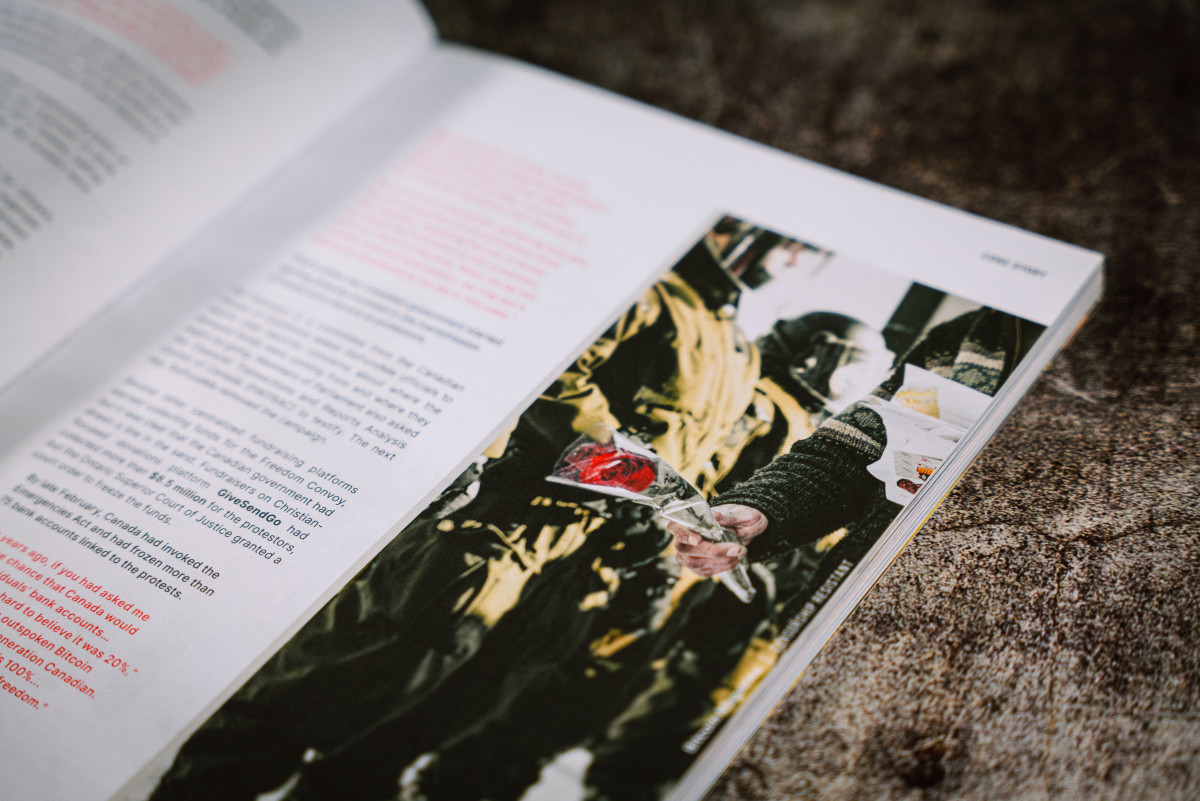
A Beacon Of Freedom
On February 17, the day that the Mareva injunction was granted, police in Ottawa constructed a 12-foot high fence around the Parliament building and established more than 100 checkpoints throughout the protest area. Barber and Lich, among others, were arrested. The next day, a police operation of horse-mounted officers, followed by colleagues on foot wearing high-visibility jackets, tactical teams in camouflage and armored vehicles, arrested at least 100 more people and towed 21 vehicles.
By late afternoon on February 19, the final significant group of protestors in the city was funneled to the corner of Bank and Sparks streets, evolving into a street party of a thousand people with an impromptu DJ by dusk. Then, a line of police officers deployed pepper spray to push the crowd one block south to Queen Street before the remaining protestors started to disperse.
Soon after, Freedom Convoy organizers instructed participants to vacate the city. As of this writing, COVID-19 vaccination requirements are still in place for Canadian truckers.
But despite the Freedom Convoy’s unceremonious end in Ottawa, the numerous ongoing lawsuits and inspired protests still being held in other parts of the world demonstrate that it was highly successful in calling attention to the truckers’ cause, as well as the growing pressures on personal freedom in the Western world.
“As a Canadian, watching protestors converge on Ottawa from both sides of the nation, and the number of people waving Canadian flags on the highway overpasses and along the sides of the road… Canada hasn’t shown that much emotion since we last won the gold medal in Olympic hockey against the USA,” Foss recalled. “This was a coming out, this was people who were voicing their freedoms and waving the Canadian flag and I just don’t see anything wrong with that. And I will never see anything wrong with that. And it took a bunch of truckers to reignite the passion under Canadians.”
And the saga served as one of the most high-profile test cases for Bitcoin as a sovereign financial rail in its thirteen-year history. As Bitcoiners continue to tout the technology as an off-ramp from undue censorship and surveillance, its use as a system for getting hundreds of thousands of dollars in value directly into the hands of those who had been blacklisted by the Canadian government may be the most potent illustration of that power to date.
Perhaps most significantly of all, it demonstrated on the world stage that fiat can only be used how governments decide, while Bitcoin is for freedom.
“I love Bitcoin, though I actually love my country more,” said Foss. “That being said, it’s gonna be a tight horse race, because my country’s going in the wrong direction and Bitcoin’s going in the right direction.”
